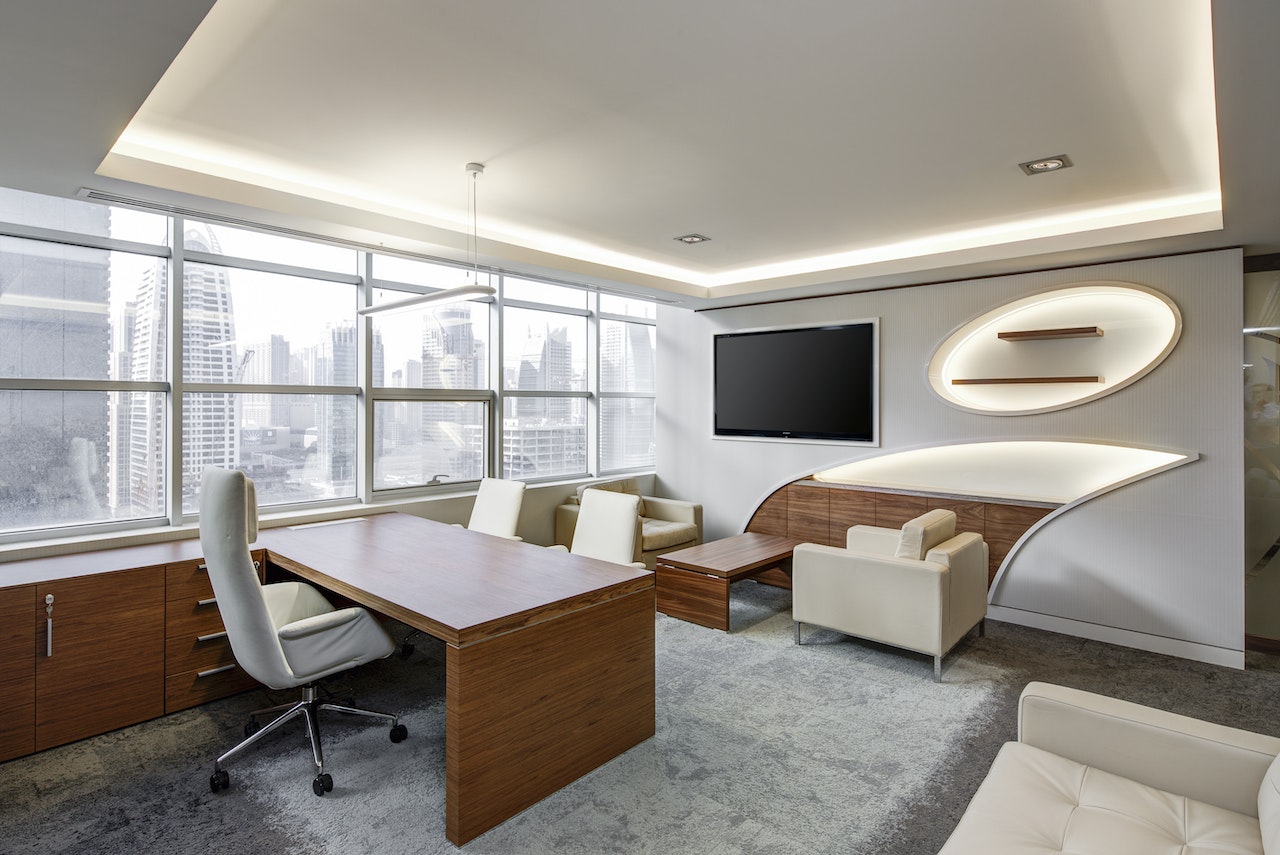Small office interior design in Singapore has distinct challenges. Create a functional, productive, and appealing workplace for employees with limited space. Businesses can maximise their little office design tips space and create a functional environment with careful planning and innovative design.
This post covers 5 Singapore office interior design concepts for small spaces. .
Choose light, neutral colors first. Bright hues brighten and expand a workspace. Neutral hues like beige and white help employees focus by creating a peaceful, tidy environment.
Second, employ multi-purpose furniture. In a small office, maximise space. Desks with built-in storage or folding tables can maximise space and improve office functionality.
Glass dividers are the third option. Glass walls or partitions can provide the impression of extra space and allow more light in. .
Vertical storage is fourth. Small offices have storage issues. Shelving or wall-mounted cabinets can maximise space and organise the workspace.
Fifth, use plants and natural light. . Plants, natural light, and even wood or stone can do this.
These suggestions can help Singaporean firms construct a compact office space that is useful, productive, and appealing to employees. Businesses can maximise their little office space with light and neutral colors, multi-functional furniture, glass walls or partitions, vertical storage, and natural accents.
Also read more about office contractor
1. Multifunctional Furniture
In Singaporean small office spaces, multifunctional furniture is an essential feature. It allows you to maximise the use of available space while providing practical and functional solutions. Furniture pieces that serve multiple purposes, such as a desk that can also function as a storage unit or a sofa that can transform into a bed for guests, can be incredibly beneficial.
When selecting office furniture, consider designs that offer flexibility and adaptability. Modular furniture that can be reconfigured as needed or furniture that can be easily moved around the space to create different work areas are great options. By using multifunctional furniture, you can effectively optimise the space and increase functionality without sacrificing style or design.
2. Bright Colors
In small office spaces, bright colors can be a game-changer in terms of creating a vibrant and lively atmosphere. By using bold colors on accent walls, furniture, or decor, you can create the illusion of a larger space and reduce the cramped feeling that small spaces can sometimes evoke.
It’s essential to be mindful of the overall effect you want to achieve when selecting colors for your small office space. While bright colors can be energising and uplifting, using them excessively can be overwhelming. To achieve balance, consider using a color scheme that is cohesive and strategic, with pops of color in specific locations. This approach can create an inviting and dynamic workspace that maximises the available space without feeling overwhelming or cluttered.
3. Natural Light
Maximising natural light in a small office space can make the area feel more spacious and open while providing numerous health benefits such as reducing eye strain, improving mood, and boosting energy levels. Consider incorporating large windows or skylights to increase the amount of natural light in the office.
In situations where natural light is not available, using artificial lighting that mimics natural light can create a similar effect. This lighting can create a comfortable working environment that feels natural and welcoming. By prioritising natural light, you can create a space that is visually appealing and conducive to productivity and well-being.
4. Vertical Space
Maximising vertical space is critical when designing small office spaces. To make the most of the available space, consider utilising shelves, storage units, or filing cabinets that can be mounted on the walls. Vertical space can also be used to create visual interest by hanging artwork, plants, or decorative accents on the walls.
It’s essential to be mindful of the height of the furniture and accessories used when maximising vertical space. Choosing pieces that are too tall or heavy can be overwhelming, making the area feel cluttered and confined. By selecting items that balance functionality with design and size, you can create an efficient and visually appealing workspace that maximises the use of vertical space.
5. Minimalism
Minimalism is the perfect design approach for Singapore’s modest workplace spaces. It is distinguished by its simplicity, usefulness, and lack of ornamentation. Minimalism can make a tiny area feel more open and breesy by emphasising the necessities and removing clutter.
Consider employing a neutral color scheme, straightforward furniture, and little else to create a minimalist workplace design. A space might get cluttered if there are too many accessories or decorations used. Instead, concentrate on organisation and functionality to design a productive and useful workspace. You may design a workstation that is both aesthetically beautiful and productive by putting an emphasis on simplicity and practicality.
Conclusion
Finally, designing office interiors for small spaces in Singapore might be difficult, but with careful planning and imaginative design solutions, businesses can create a workspace that suits their demands. Light and neutral hues, multi-functional furniture, glass walls or partitions, vertical storage solutions, and natural components can maximise space, boost productivity, and beautify the workstation.
Light and neutral colors make a workspace feel brighter and larger. Multi-functional furniture maximises space and improves workspace functionality. Glass walls or barriers provide natural light and workspace appeal. Vertical storage can maximise space and organise the office, while plants and natural light can make it more attractive.
While designing a tiny workplace, companies should consider employee demands and preferences. Functional, productive, and attractive workspaces improve employee satisfaction, well-being, and corporate performance.
While these design solutions can work, firms should also consider the restrictions of their small area, such as noise in an open workspace or seclusion in a glass-walled office. .
In conclusion, Singapore office interior design for tiny areas takes creativity and preparation. Light and neutral hues, multi-functional furniture, glass walls or partitions, vertical storage solutions, and natural components can maximise space, improve productivity, and beautify the workstation. Businesses can boost productivity, well-being, and success by designing their small office space around employee needs and preferences.
Discover more about top Corporate interior designers Singapore






